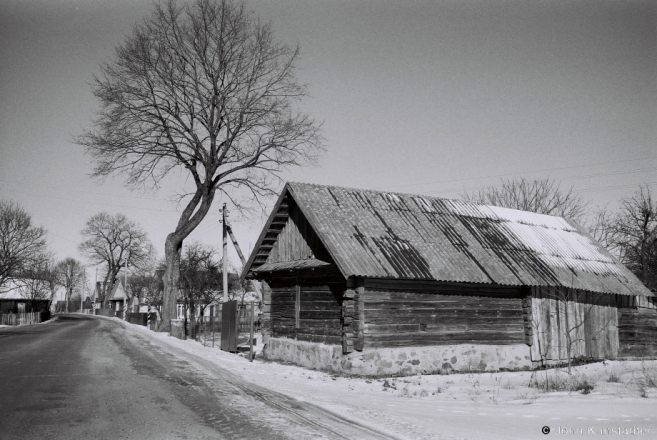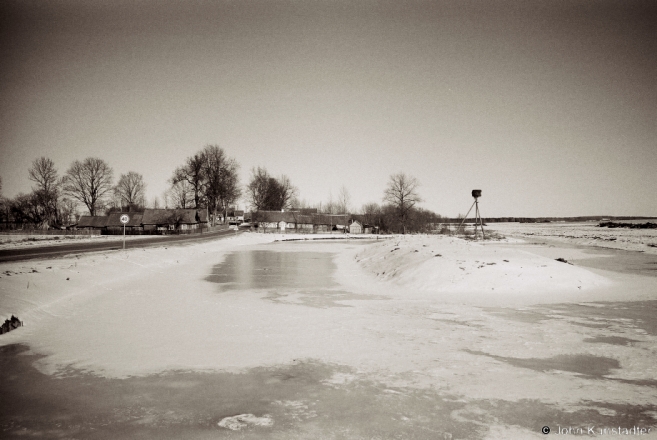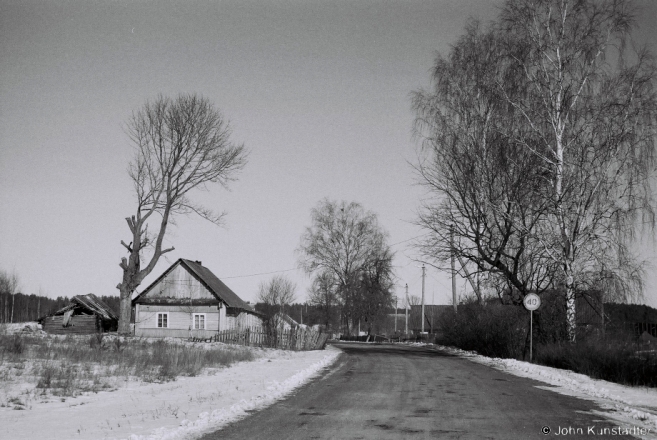Photo Expedition to Stoubtsy District 2015 (I/IX): ethnotoponyms. Фотавандроўка па Стаўбцоўскім раёне 2015 г. (I/IX): этнатапонімы.
Like Baranavichy and Ljakhavichy Districts (see photos for June 23-July 5, 2014) northeastern Stoubtsy District, 60-90 kilometers southwest of Mjensk, has a noteworthy intersection of ethnotoponyms — place-names reflecting the ethnic origin of their inhabitants.
Hudzjali (Гудзялі) has as its root an old Baltic (Lithuanian) word for Belarusian. The name suggests that the village’s inhabitants were Slavs (early Belarusians) surrounded by Baltic (Lithuanian) villages. There is a whole series of villages with the Hud- root farther north, especially closer to the border with modern Lithuania.
Гудзялі.
Litva (Літва) lies six kilometers to the southwest of Hudzjali. Its name, shared exactly or closely by more than two dozen other villages in Belarus, can be both a toponym, referring to an extended area, and an ethnotoponym referring to the ethnic character of a specific settlement. Here the name suggests that the village was settled by a Baltic or Baltic-speaking group in an area of predominantly Slavic (Belarusian) villages.
Літва.
Tatarshchyna (Татаршчына) lies about 20 kilometers south of Litva. Its name suggests that the village was settled by Tatars. There are many villages with similar names in Belarus; a cluster of five villages with names suggesting settlement by Tatars or other Turkic groups extends across an area 45-75 kilometers farther north from here, roughly along the same 27th meridian.
Татаршчына.


